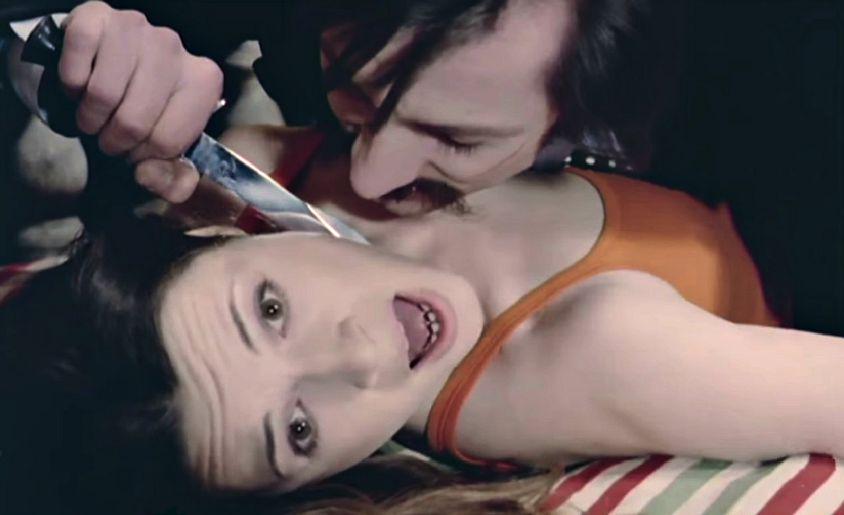
Jeunes filles impudiques (1973), released in english as Schoolgirl Hitchhikers, was Jean Rollin’s first forray into exclusively erotic material. Though most of his films are horror pictures with erotic soft-core sequences, they weren’t initially envisioned that way. In order for Rollin to obtain financing for his Gothic horror films it was almost obligatory that sex be featured prominently. The underlying motivations for Rollin to assume directorial duties on Jeunes filles impudiques are the same; to make money.
The title itself, Jeunes filles impudiques, is itself a sort of “cash grab” because of its allusions. For one thing there’s a rather obvious reference to the Schulmädchen-Report series which began in 1970. There’s also a nod to the “hitchhiker” sub-genre of exploitation film that was really beginning to grow in popularity at this point. Even if the leads in Jeunes filles impudiques never wear school uniforms or hitchhike, the fundamental fetishes that make up the spectacles of those films is still present.
Jeunes filles impudiques is still very much a film by Jean Rollin regardless. Not only are all of his signature shots present, but the setting (an abandoned villa) and even the premise (innocents running afoul of an immoral being) are all hallmarks of Rollin’s cinema fantastique. It’s Rollin’s sense of visual poetry that allows Jeunes filles impudiques to transcend beyond the erotic film.
The opening sequences are especially effective; feeling almost like a stand alone film with more added onto it afterward. The film opens with two girls (Joëlle Coeur and Gilda Arancio) walking through the woods going camping. Joëlle Coeur narrates this sequence, grounding the visuals in her memory and fantasy by equal measure. The girls happen upon a Villa that is for sale and decide to stay the night. In one of the bedrooms they make love. Rollin treats this relationship between the two girls respectfully and with a tasteful tenderness that is uncommon in these types of films. So when Joëlle Coeur wanders downstairs, after Gilda Arancio has fallen asleep, and discovers a jewel thief (Willy Braque) hiding out there’s a slight tonal shift. It’s not a jarring change in tone, it feels fluid, and once all three characters are having sex together the tenderness of the earlier sequence is reprised.
It’s that first act that feels insular. Joëlle Coeur’s narration disappears afterward as Rollin is obliged to steer the film into the crime genre. Kink, in the guise of crime film tropes of kidnapping and torture, rules the second act of Jeunes filles impudiques. But so does Rollin’s more expressionistic visual impulses (shooting through glass, using low angles, blocking actors toward the camera, etc.). Jeunes filles impudiques becomes more generic but it’s still all Jean Rollin.
As the film enters its final act a private eye is on the scene and a shoot out ensues. Rollin’s crosscutting is rather inspired during this sequence even if there’s no real payoff to the escalating suspense. Instead Jeunes filles impudiques ends as a farce, and not a very good one. Then, in the final shot of the film, Joëlle Coeur and Gilda Arancio leave as they entered: holding hands and skipping through the woods.
Jeunes filles impudiques isn’t considered by many to be one of Jean Rollin’s best. It is, however, essential to charting Rollin’s career and stylistic development. Rollin’s cult of followers tend to downplay the filmmaker’s gifts as an erotic storyteller. Compared to a contemporary like Jess Franco, the sex in Rollin’s films feels far less exploitative.
